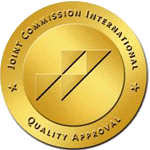About the situation with HIV incidence in Astana

It has been almost 40 years since the discovery of HIV (immunodeficiency virus). Since then, people around the world have learned to live with the disease by taking special therapy. In 2022 more than 300 cases of HIV infection were identified in Astana, most of them, namely 72%, were men. There is and will be an upward trend of the disease in the capital due to high migration. Moreover, if HIV used to be mostly detected in drug addicts, female sex workers, now the social portrait of a person with HIV has changed. These are educated young people with stable income, leading a normal life. The correspondent from the information agency talked to Inzhu Aimagambetova, who is the head of the department of epidemiological surveillance of HIV infection at the Center for HIV Prevention of Astana, about how HIV changes the life and psychology of a person, the treatment of the disease, stereotypes and misconceptions.
A social portrait of a HIV Kazakhstani citizen
Ms. Aymagambetova notes that HIV is an aggressor virus. Its peculiarity is that it multiplies exponentially. “HIV affects healthy cells, generating similar viral cells in their place, and this happens until the immunity is reduced to zero”.
Annually, up to 20% of all cases detected in Astana are from other towns, and 15-17% are foreigners. The majority of HIV-infected people are young men.
“There has always been a high coverage rate of HIV testing in the capital - from 25% to 28%, while the WHO recommendation is that the threshold level of coverage is not less than 10%. But we constantly do more tests, and we have up to 30% of the population tested for HIV every year. The more tests are done, the more cases are detected. In addition, the nature of the epidemic has changed, sexual transmission of HIV has become dominant. By the end of 2022, over 300 cases of HIV infection have been detected in Astana. In over 80% of cases, infection occurred by sexual transmission, including 72% of men and 28% of women respectively”, said the head of the HIV/AIDS Epidemiological Surveillance Department.
According to her, young people are still not alert to HIV, which means they are potentially close to the risk group. If previously HIV was detected in injecting drug users, convicts, commercial sex workers, today it is quite a well-to-do socially adapted young person aged 20 to 39.
“A person may have a higher or secondary education, a good job and a steady income. As a rule, young people become infected with HIV through unprotected sexual contacts, both hetero- and homo-contacts. We need to understand that everyone who is sexually active is at risk,” Inzhu Aimagambetova said.
How HIV is transmitted: stereotypes and misconceptions
HIV infection is only transmitted by three ways: sexually, perinatally (from mother with HIV to child) and parenterally (intravenous drug injection). In the latter case, it can happen through violation of the integrity of the skin and mucous membranes, drug use, medical manipulations.
“There are no other ways of catching HIV. The infection is not transmitted through everyday contact. Ordinary contacts at work, at home, at school, friendly hugs, friendly kisses, using a shared phone, swimming in the same pool with an HIV-infected person will not lead to infection. Nevertheless, measures of their own safety have not prevented anyone”, said the spokeswoman. - In the external environment, outside the human body, the immunodeficiency virus dies instantly. Direct sunlight inactivates it within 2-3 minutes, heating to 60 degrees kills it in 5-7 minutes, and boiling kills the virus immediately, so standard chlorine solutions for surface treatment in the home and medical institutions are sufficient to prevent HIV”.
Testing: anonymous and confidential
You can get tested for HIV in your neighborhood clinic, at private clinics or at an HIV prevention center. This procedure is free and confidential - HIV testing can be done anonymously.
“One learns about his/her HIV-positive status only after taking an HIV test. As a rule, an HIV test is taken during hospitalization, medical examination, registration of any documents requiring HIV results, etc. If women have not previously been tested for HIV, they must do so when they register for pregnancy at the antenatal clinic,” Inzhu Aimagambetova said.
Is it possible to know if you have HIV?
It is not always the presence of the immunodeficiency virus in the body that gives bright and characteristic symptoms. If the immune system is strong, a person may not be aware of his disease for years until he is tested. Nevertheless, symptoms such as elevated body temperature, prolonged and unexplained diarrhea, weight loss can be indicative of HIV.
“Everything is strictly individual and depends on a person's immunity, viral load, and the source of infection, but on average, from 2-3 months to 5-6 years, HIV infection can be asymptomatic. When we tell a person that he/she has HIV, the reaction of course varies. The key population groups - drug users, men who have homosexual contacts, are more aware of HIV due to the prevention work of the center. They react calmly, roughly with the words: “I assumed as much”. When an ordinary person learns about their positive HIV status, we see shock, aggression, depression. The result of infection is announced only in the HIV prevention center in the presence of a psychologist. There may be tears, threats to doctors, disbelief, insults, rejection of the result, a demand to retake the test. After some time, a week or two, the person calms down, accepts his diagnosis. He gets registered and receives the necessary treatment”, Inzhu Aimagambetova explains.
Peculiarities of treatment and what happens if you ignore it
HIV infection is treated with antiretroviral therapy (ART). The doctor emphasizes that modern medications are effective in fighting HIV. The main rule of therapy is to take them regularly and continuously. This suppresses the multiplication of the virus in less than six months of treatment and helps keep HIV under control for life.
“The primary goal of therapy is to permanently suppress HIV in a person's bloodstream. Although ART does not provide complete sanitization of the body from the virus, but if administered correctly and regularly, it helps to halt the progression of HIV infection, restore the immune system, and mark the regression of secondary diseases if they have developed against a background of weakened immunity. All this helps maintain the quality of life of a person with HIV”, said the head of the department of epidemiological surveillance of HIV infection.
Free medication
She noted that there can be no wrong HIV test result if everything is done correctly. The AIDS service uses test systems with diagnostic sensitivity of 100% to diagnose HIV infection. This means that the probability of error is excluded. In order to live as long as possible, people with HIV must strictly follow the doctor's prescriptions, and most importantly, tune in to the treatment. Medicines in Kazakhstan can be obtained for free as part of the guaranteed free medical care.
“Combination therapy is prescribed, that is, there are three drugs in one pill. The use of antiretroviral therapy significantly prolongs the life of a person with HIV. By suppressing the multiplication of the virus, the likelihood of transmitting HIV to other people is also reduced. The early initiation and continued use of ART is not only therapeutic, but also the most important anti-epidemic measure to reduce the source of infection. If a person does not receive treatment, HIV can progress to the stage of AIDS, when irreversible clinical phenomena develop that cannot be cured, and death occurs”, Inzhu Aymagambetova said.
HIV, pregnancy and labour
If an HIV-infected person wants to start a family and have children without risk to their health, a number of conditions must be met. Among them are treatment and pregnancy planning. By the way, in the past five years in Astana not a single case has been registered where a newborn has been infected by a mother with HIV.
“With a proper planning of pregnancy along with the attending physician and through a set of preventive measures, the likelihood that the child will be born infected is zero. The greatest success of antiretroviral therapy has been in reducing the likelihood that a woman with HIV will infect her baby during pregnancy and delivery. Thanks to the early prescription and continued use of ART in Astana, not a single case of HIV infection in newborn babies born to mothers with HIV has been reported in the last five years. In 2022, 30 HIV-positive pregnant women were registered in Astana and 22 babies were born. All the children are healthy”, Inzhu Aimagambetova said. - An infectious disease doctor at our center prepares HIV-positive women for pregnancy. Every month a woman should be tested for viral load. Only if the viral load is below the threshold value she is allowed to get pregnant. If a woman with HIV-positive status is already pregnant, she is immediately prescribed antiretroviral therapy. An obstetrician-gynecologist at the outpatient clinic also monitors her.
As a reminder, there is criminal responsibility for intentional HIV infection in Kazakhstan. According to Article 118 of Kazakhstan's Criminal Code “Deliberately putting another person at risk of infection” will cost you a fine of at least 200 MCI, correctional labor, community service for up to 180 hours or arrest up to 5-10 days.
But for infecting another person with HIV, those who knew about the disease could face imprisonment of up to five years. An act described in part 2 of Article 118 of the Criminal Code, committed against two or more persons or against a known minor, is punishable by 5 to 10 years' imprisonment.
According to “NewTimes.kz” information agency materials




